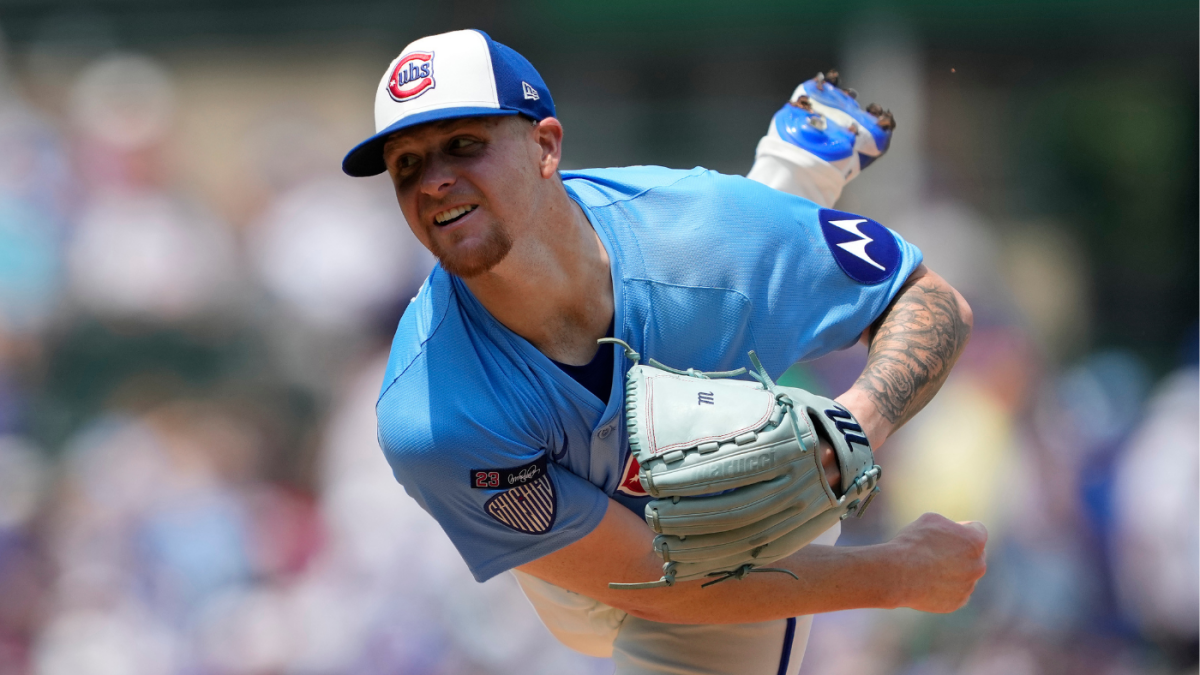The Chicago Cubs find themselves at a critical juncture in the 2025 season. Once leading the NL Central, they now face an uphill battle for a wild card spot, their division lead having evaporated. Injuries have ravaged the starting rotation, and the offense has struggled to maintain consistency. Amidst these challenges, a beacon of hope has emerged in rookie right-hander Cade Horton.
Horton’s unexpected rise through the ranks has provided a much-needed boost to the Cubs’ pitching staff. Thrust into the spotlight due to injuries, Horton has seized the opportunity, showcasing poise and talent beyond his years. This article delves into Horton’s impact on the Cubs’ wild card aspirations, analyzing his performance, his role within the team, and the challenges that lie ahead as the season progresses. We’ll explore how Horton has become a stabilizing force and a key component of the Cubs’ playoff push.
Cade Horton’s Arrival and Impact
Cade Horton, selected seventh overall in the 2022 draft, made his MLB debut on May 10th. His promotion was expedited due to injuries within the Cubs’ pitching rotation, but his performance in Triple-A, boasting a 1.24 ERA and 0.86 WHIP across six starts, made a compelling case for his inclusion. Despite the initial expectations of a learning curve, Horton quickly demonstrated his potential at the highest level.
Early in his major league career, Horton experienced the typical ups and downs of a rookie pitcher. Through June, over nine starts, he pitched to a 4.80 ERA and a 1.44 WHIP, recording 33 strikeouts against 14 walks in 45 innings. While there were moments of struggle, Horton displayed resilience and an ability to learn from his mistakes. It was evident that with experience, he could refine his approach and become a reliable asset for the Cubs.
Horton’s Scoreless Streak and Growing Confidence
As Horton gained experience, his performance improved significantly. A turning point came on July 3rd, when he threw seven scoreless innings in a 1-0 Cubs victory. Although he faced a setback on July 9th, allowing four runs in 4 ⅔ innings, he responded emphatically. Since that outing, Horton has been on a remarkable 23 ⅓-inning scoreless streak, the longest ever by a Cubs rookie. This stretch places him in the company of legendary Cubs pitchers like Greg Maddux, Kerry Wood, and Mark Prior.
Horton’s confidence has grown with each successful start. He has now made four consecutive starts without allowing a run, showcasing his ability to consistently deliver quality outings. Since the beginning of July, he has posted a stellar 1.05 ERA and 0.93 WHIP with 26 strikeouts in 34 ⅓ innings. His most recent performance against the Reds, where he struck out six and allowed only two hits in 5 ⅔ innings, further solidified his status as a rising star.
Trade Deadline and Horton’s Untouchable Status
Despite Horton’s emergence, starting pitching was considered a priority for the Cubs at the trade deadline. They acquired Michael Soroka, but his tenure was short-lived due to injury. The Cubs’ reluctance to part with Horton in any trade negotiations highlights his value to the organization. According to Cubs president Jed Hoyer, trading a player with Horton’s potential and control for a player with less control did not make sense.
Horton’s status as a nonstarter in trade discussions underscores the Cubs’ belief in his long-term potential. His combination of talent, control, and performance has made him an invaluable asset. The Cubs are committed to developing Horton into a frontline starter, recognizing the significant impact he can have on their future success.
Horton’s Projected Role in Playoff Rotation
With the regular season nearing its conclusion, Horton is trending toward a prominent role in the Cubs’ playoff rotation. While veteran lefties Matthew Boyd and Shota Imanaga are expected to lead the rotation, Horton appears to be the third-best option. His recent performances have solidified his position, making him a critical component of the Cubs’ pitching plans.
The primary concern surrounding Horton is his workload. Between Triple-A and the majors, he has already pitched 108 ⅓ innings this season, surpassing his previous workload in recent years. The Cubs are acutely aware of the potential risks associated with overworking a young pitcher, particularly as the playoffs approach. They have been cautious with his pitch counts, as evidenced by his early removal after just 67 pitches in his last start.
Managing Horton’s Workload for Playoff Success
The Cubs face a delicate balancing act in managing Horton’s workload while simultaneously competing for a playoff spot. Skipping his turn in the rotation is a possibility, but his current form makes it difficult to remove him from the lineup. The impending return of Jameson Taillon may provide an opportunity to reduce Horton’s workload without significantly weakening the rotation.
Assuming the Cubs can effectively manage Horton’s workload, their playoff rotation is likely to consist of Boyd and Imanaga as the top two starters, followed by Taillon and Horton. Javier Assad, Colin Rea, and Ben Brown could provide valuable support out of the bullpen. However, the Cubs must first secure their playoff berth, and Horton’s continued success will be crucial in achieving that goal.
Conclusion
Cade Horton’s emergence as a reliable starting pitcher has been a significant development for the Chicago Cubs. As they navigate a challenging season and strive for a wild card spot, Horton’s performance has provided a much-needed boost to their pitching staff. His poise, talent, and growing confidence have made him an invaluable asset, and his contributions will be critical to the Cubs’ playoff aspirations.
However, the Cubs must carefully manage Horton’s workload to ensure he remains effective throughout the season. Balancing his development with the team’s immediate needs will be a key factor in their success. If they can achieve this balance, Horton’s ascent will undoubtedly be a major reason why the Cubs can achieve playoff success, solidifying his status as a cornerstone of the franchise for years to come.

Leave a Reply